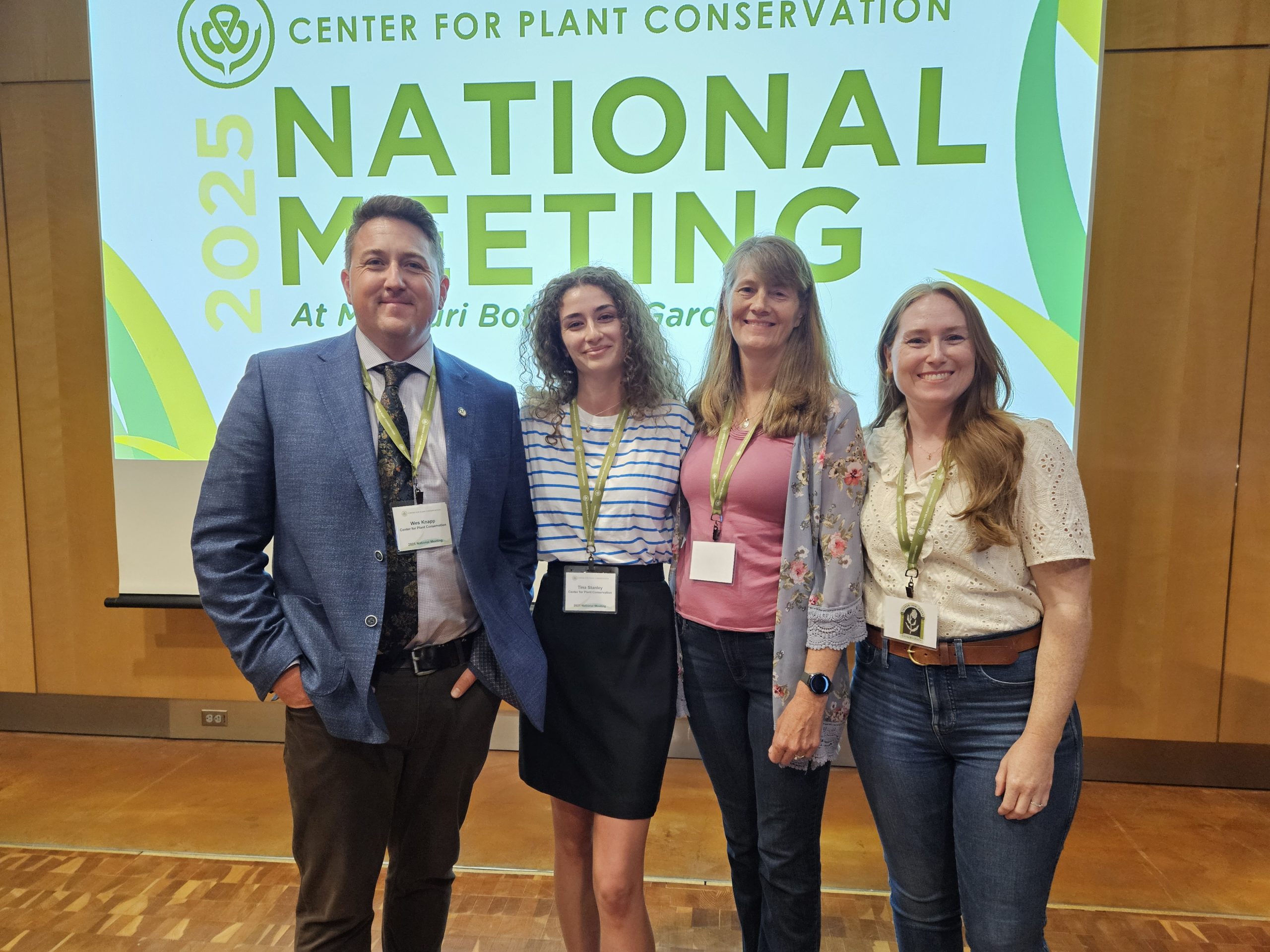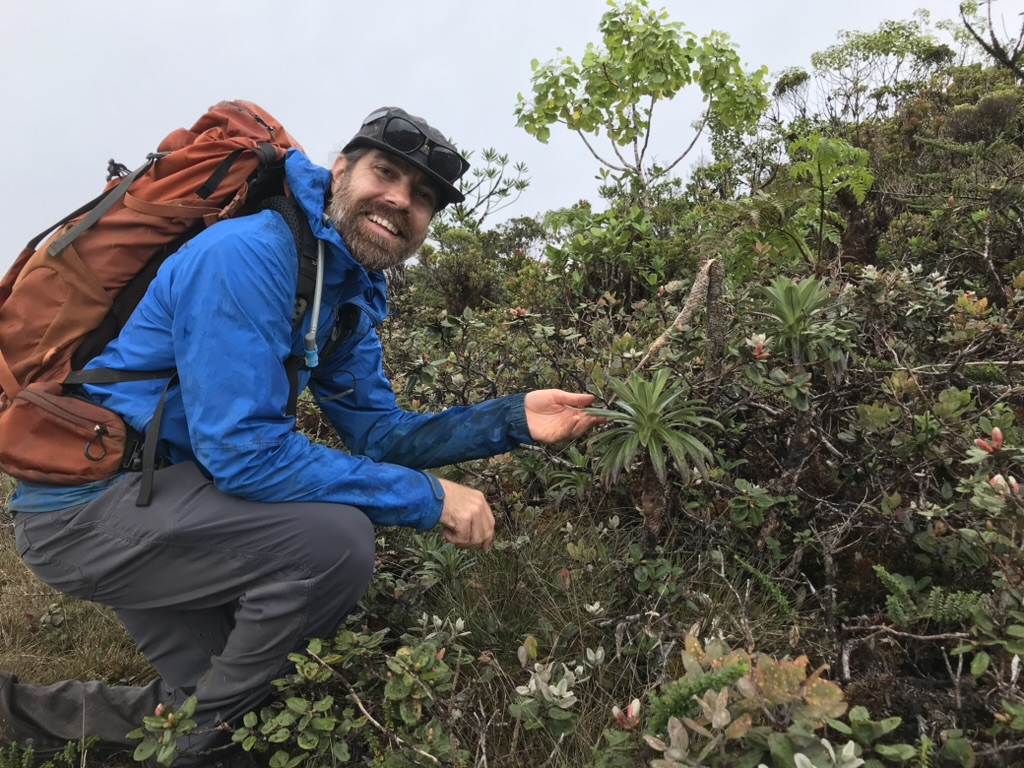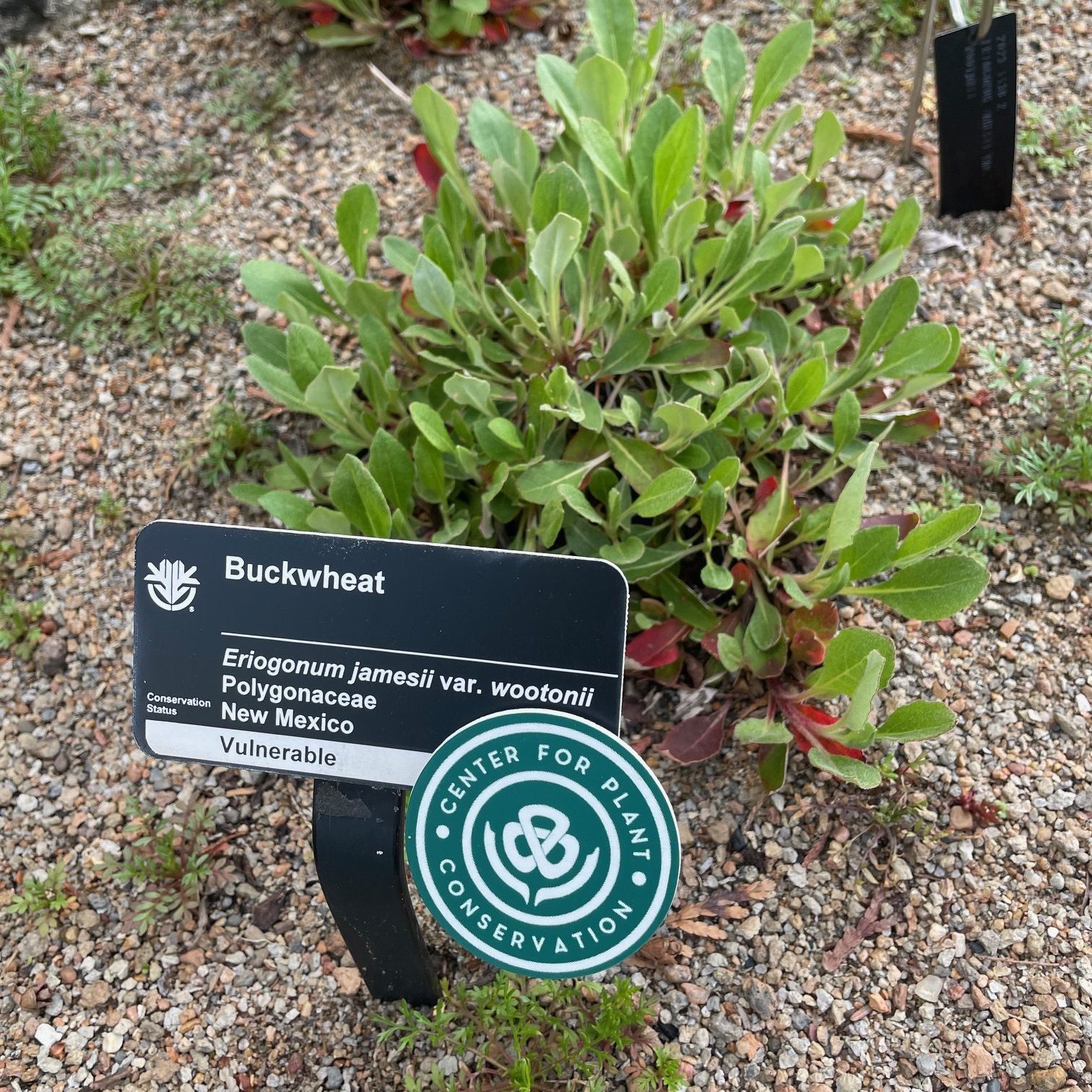Save Plants
Center for Plant Conservation
December News 2022
As 2022 comes to a close, The Center for Plant Conservation (CPC) is proud to reflect on what we have accomplished together over the past year. Thanks to our National Office staff, Board of Trustees, conservation partners, and generous donors, we have been able to launch and advance exciting projects that meaningfully support plant conservation—not only in North America, but around the world. In this issue, we highlight the progress made on new seed collections for the National Collection, the continued growth of the Rare Plant Academy, and the expansion of our network with new Institutional Conservation Partners. Collectively, these programs, rescources, and partnerships advance our shared mission to Save Plants and promote the best practices for plant conservation from the CPC network to the rest of the world.
We are deeply grateful to have you as part of our conservation community. Together, we save more plants than would ever be possible alone—ensuring that both plants and people thrive for generations to come. As our Conservation Champion, Dr. Jessamine Finch of the Native Plant Trust shares, “Remember that all actions, no matter how small, help us further plant conservation.”
We wish you a happy holiday season and look forward to everything to come in 2023,
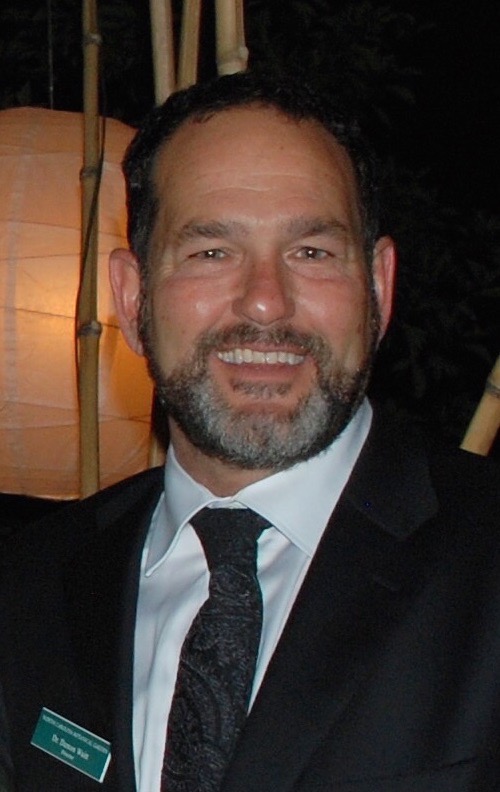
Damon Waitt
Director, North Carolina Botanical GardenNational Collection Updates
The enduring commitment to conservation throughout our network of Conservation Partners enabled the CPC National Collection to grow even larger this year. With 150 new species collected in 2022, CPC Participating Institutions now collectively possess a monumental total of 2,342 native North American rare plant species stored safely in ex-situ conservation collections. These new additions represent collections from 27 different Participating Institutions across 15 states/territories. Many of the rare plants collected in 2022 are a direct result of the California Plant Rescue seed banking initiative, an incredible success in regional conservation efforts, which has helped pave the way for the growing Florida Plant Rescue initiative. Read on to meet some new additions to the National Collection.
Whorled Sunflower (Helianthus verticillatus)
Whorled sunflower (Helianthus verticillatus), a critically imperiled species native to the Southeastern US, is found in Alabama, Georgia, Mississippi, and Tennessee. This sunflower lives in prairie habitat that was once widespread throughout the region but is now fragmented and facing constant threat. Less than ten populations of this species are known to remain in nature. Helianthus verticillatus is held in conservation collection at Southeastern Grasslands Institute, a Participating Institution new to the CPC network this year.
Learn more about conservation actions taken for Whorled sunflower on its National Collection Plant Profile, and help support its conservation with a Plant Sponsorship.
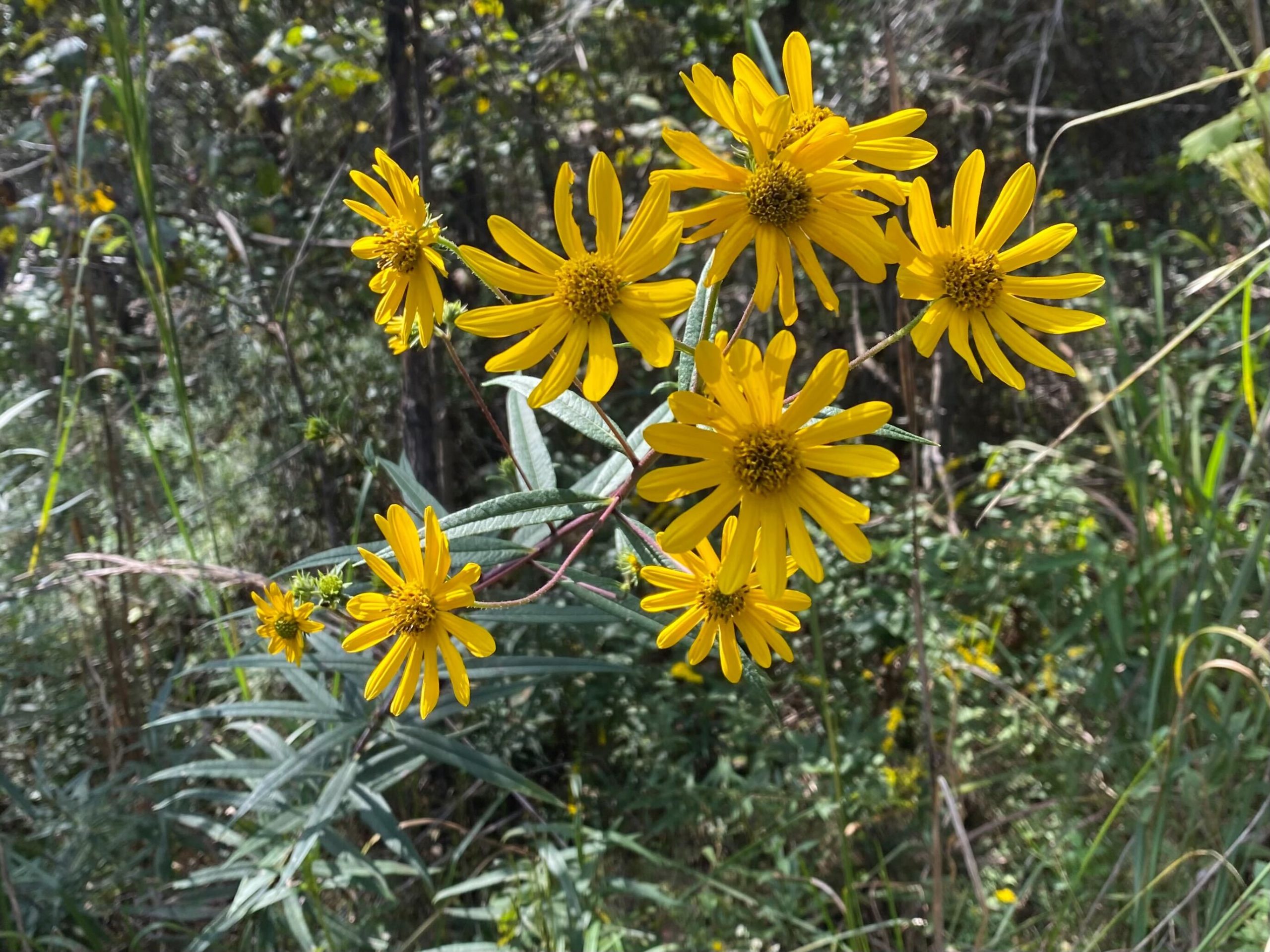
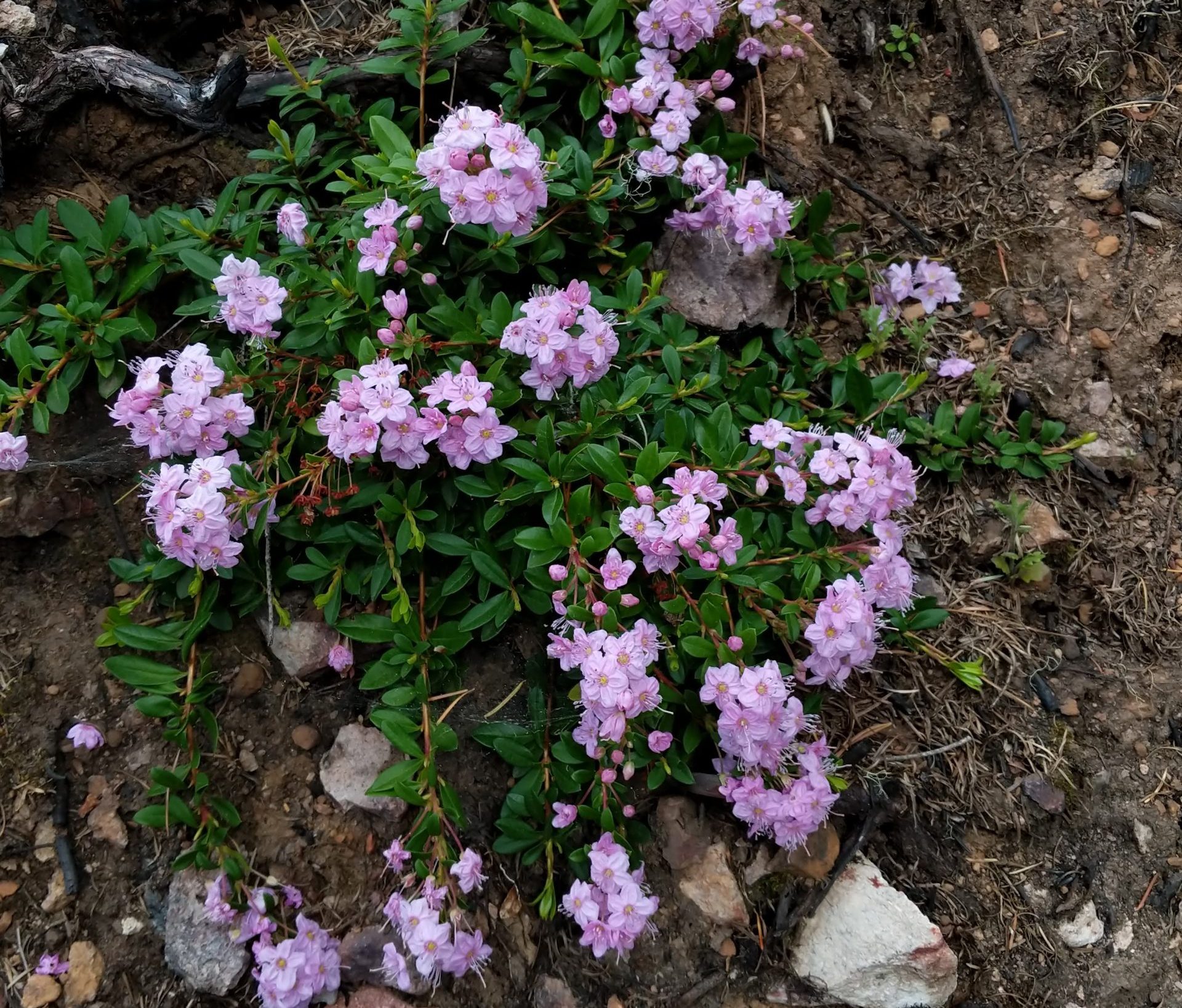
North Umpqua Kalmiopsis (Kalmiopsis fragrans)
North Umpqua Kalmiopsis (Kalmiopsis fragrans) is an imperiled species native only to the state of Oregon. This species was collected at a Research Natural Area in the Umpqua National Forest by Rae Selling Berry Seed Bank, as part of the CPC’s IMLS-funded Seed Longevity Study. Kalmiopsis fragrans plants grow upon steep rocky outcrops – making for a field excursion with striking views but difficult terrain.
Learn more about conservation actions taken for North Umpqua Kalmiopsis on its National Collection Plant Profile, and help support its conservation with a Plant Sponsorship.
Vanishing Wild Buckwheat (Eriogonum evanidum)
Vanishing wild buckwheat (Eriogonum evanidum) is native to California and Baja California. One of many species collected for the California Plant Rescue initiative, this species is held in conservation collection at California Botanic Garden. Thought for many years to have gone extinct, the species was rediscovered by a team at California Botanic Garden. Thanks to their efforts in collecting and protecting Eriogonum evanidum in ex-situ storage, this buckwheat will hopefully not vanish again!
Learn more about conservation actions taken for Vanishing wild buckwheat on its National Collection Plant Profile, and help support its conservation with a Plant Sponsorship.
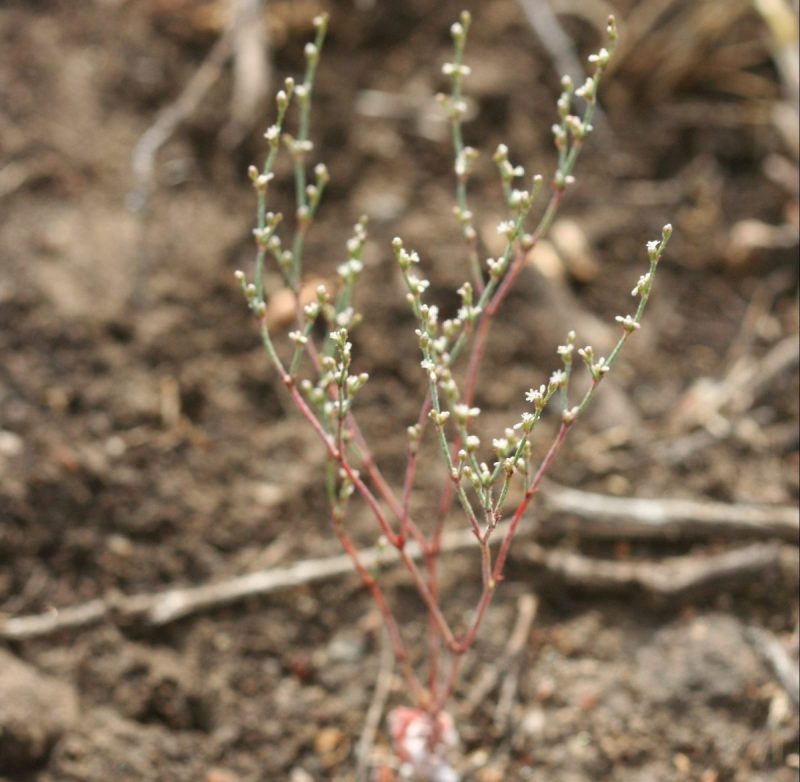
Welcome to CPC: New Institutional Conservation Partners
To close out the year, the Center for Plant Conservation (CPC) is pleased to welcome two new plant conservation organizations to our network of Institutional Conservation Partners: Florida Natural Areas Inventory and The Huntington. Now 73 members strong, the CPC network brings together plant conservationists from across North America and is strengthened by the knowledge and experience that each institution brings. Together, our network makes it possible to Save Plants.
Florida Natural Areas Inventory
Network Partner | Tallahassee, FL
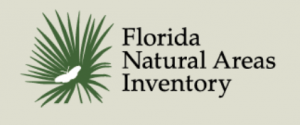
Founded in 1981 as a member of The Nature Conservancy’s international network of natural heritage programs, now coordinated by NatureServe, the Florida Natural Areas Inventory (FNAI) has a mission to collect, interpret, and disseminate ecological information critical to the conservation of Florida’s biological diversity. Working throughout the Sunshine State, FNAI’s database and expertise facilitate environmentally sound planning and natural resource management to protect the plants, animals, and communities that represent Florida’s natural heritage.
FNAI staff continually build and maintain a comprehensive database of the biological resources of Florida, which now includes more than 32,000 element occurrences of rare plants, rare animals, and high-quality natural communities. These occurrences are maintained in a GIS (Geographic Information Systems) database for mapping and analysis. FNAI also serves as the primary source for information on Florida’s conservation lands. The FNAI database includes GIS boundaries and statistics for more than 2,000 federal, state, local, and private managed areas. The database also includes information on Florida Forever environmental land acquisition projects.
As a founding partner of the CPC-led Florida Plant Rescue (FLPR) statewide seed-collecting initiative, FNAI invaluably supports CPC’s mission by carrying on FLPR coordination and data maintenance for the project. They aspire to provide meaningful rare plant data to CPC and partners to help inform plant conservation actions in the state, and–as opportunities arise and resources allow–FNAI also hopes to be able to collect plant materials for other partners to process and safeguard.
The Huntington
Participating Institution | San Marino, CA

Based in San Marino, CA, The Huntington Library, Art Museum, and Botanical Gardens is dedicated to sharing its world-renowned collections to support scholarship, foster learning, inspire creativity, and offer transformative experiences for diverse audiences. The Huntington has been growing rare and endangered plants for over a century. Its plant conservation program, formally begun in 2007, has steadily grown over the last 15 years and now oversees the herbarium, seed bank, tissue culture lab and cryobiotechnology program.
The Huntington’s living collections are one of the largest and most diverse plant collections in the world, with over 57,600 accessions, represented by over 84,700 living plants. The Botanical Gardens grow 27,600 taxa (including hybrids, cultivars, and naturally occurring taxa) and currently have 23 core collections recognized in their living collection. Among these are large charismatic groups that are imperiled in the wild, such as cacti, orchids, and cycads. The Huntington has an institutional commitment to be leaders for a sustainable world.
With the understanding that the Botanical Gardens hold stocks of threatened species during a period of habitat degradation and global biodiversity contraction, The ARK Conservation Program at The Huntington helps identify and prioritize at-risk taxa in their living collection for targeted propagation and research, as well as outreach. A key component of this program is to form partnerships using a scaled approach, offering unique resources that could contribute to plant conservation at the national level. By joining the CPC network, The Huntington aims to be part of an integrated network of professionals in order to facilitate the exchange of resources to support native plant conservation and create greater impact.
Celebrating Four Years of the CPC Rare Plant Academy
The strength of the CPC network is the growing and evolving expertise of the plant conservation experts who form our community. Our network has adapted its practice to meet the challenges of preventing rare plant extinction, as threats to rare plants have rapidly emerged from accelerated climate change, novel pathogens, and urban development. At the CPC National Office, we are always searching for ways to connect our community of practice, so that critical innovation in our field can be quickly communicated and provide plant-saving support. That is why, five years ago, CPC applied for a National Leadership Grant to the Institute for Museum and Library Services to modernize our CPC Best Practice Guidelines into a communications platform configured for rapid dissemination. Funded in 2018, this project has produced an online platform, the CPC Rare Plant Academy (RPA), with the following components:
Web Based CPC Best Practices Guidelines: These guidelines, at the heart of CPC’s mission, are now available in three formats: print, free downloadable PDF, and HTML web page. The web version includes an additional Horticulture chapter not available in the other versions, and it is interspersed with relevant multi-media content from RPA videos.
Online Community Forum: A standard online forum offers an “announcements” page for job postings and other network news, as well as domain-specific Q&A boards about topics such as seed banking, reintroduction, and more.
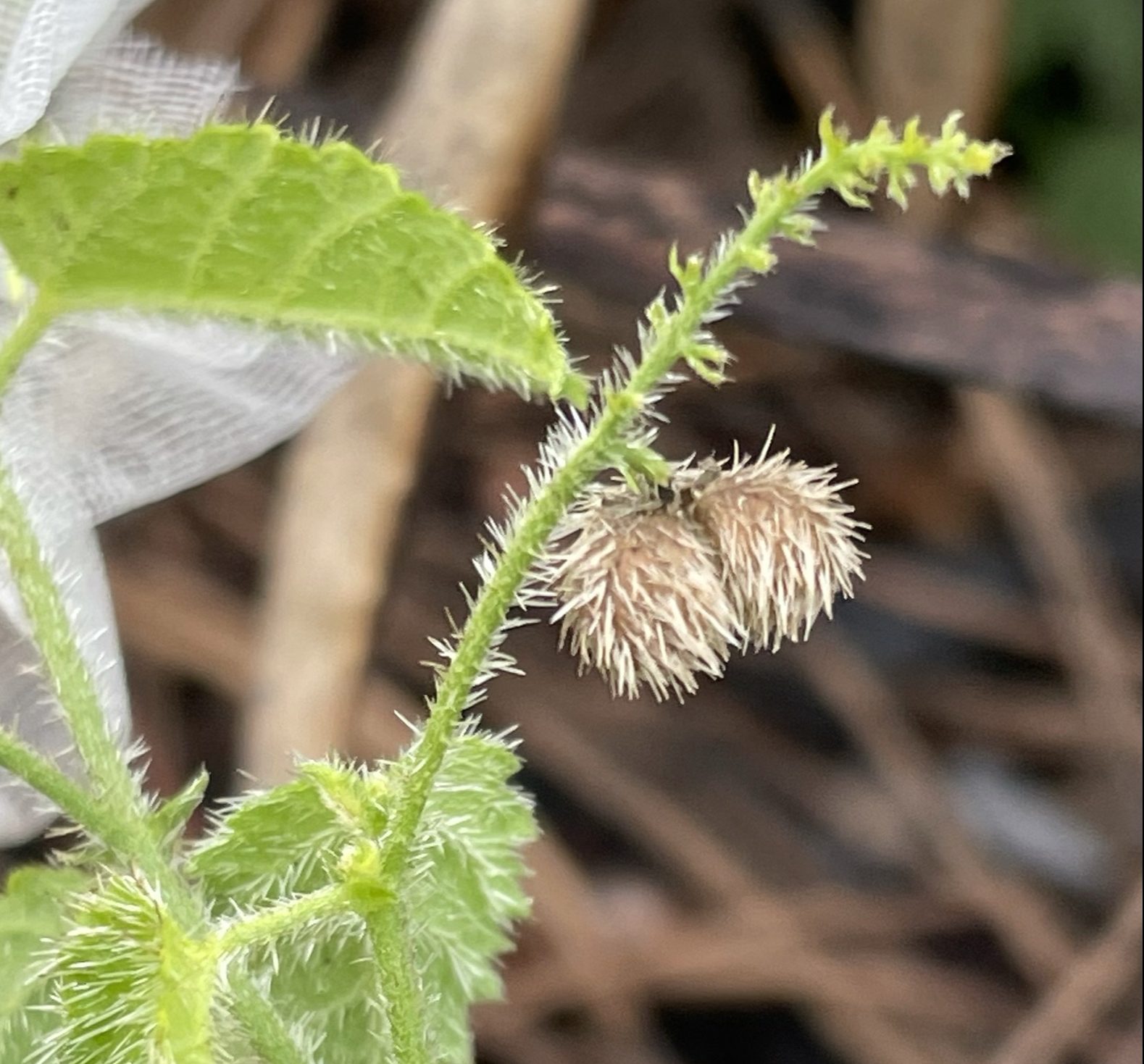
RPA Video Library: CPC’s network of experts have contributed to over 30 “produced” videos on specific plant conservation topics, ranging from “Orchid Micropropagation” to “Maximizing Genetic Diversity in Seed Collection.” We have also catalogued the proceedings of over 300 videos from 12 plant conservation conferences, which serve as an oral history of plant conservation action in our network.
Omni Search and Multi-media Plant Profiles: We worked to make the content created for RPA and other CPC projects as accessible and visible in as many places as possible. This included revamping our National Collection Plant Profiles to include multi-media information, such as videos from conferences and newsletter articles. The plant profile for the Florida torreya (Torreya taxifolia) provides an example of this integration.
RPA Photo Gallery: A picture is worth a thousand words—especially when it comes to rare plants cursed with names like “Deltoid spurge” or “Florida Keys noseburn.” Our photo gallery showcases the beauty of rare plants and the human component of their preservation, which is just as awe-inspiring.
By the numbers, RPA has clearly been a success. We have grown to over 1,100 registered users in our community forum. In 2022, various components of the platform received more than 44,000 unique visitors, nearly quadrupling the pre-RPA site visitation of CPC’s web resources. In a project community survey, 68% of respondents indicated that they used the RPA web resources three or more times per year, with 20% indicating they use it more than 11 times.
The development of a crowd-sourced communication system came with some important lessons. First, all online discourse—even a small-but-mighty plant conservation community forum—needs moderation. Every message posted on CPC Rare Plant Academy is now vetted by a member of the CPC National Office for alignment with our terms and conditions before being pushed along to partners. COVID-19 also posed challenges—ideally, we would have been able to capture more live footage of plant conservation in action for produced videos, but the circumstances turned our attention toward animations and video editing of contributed photos.
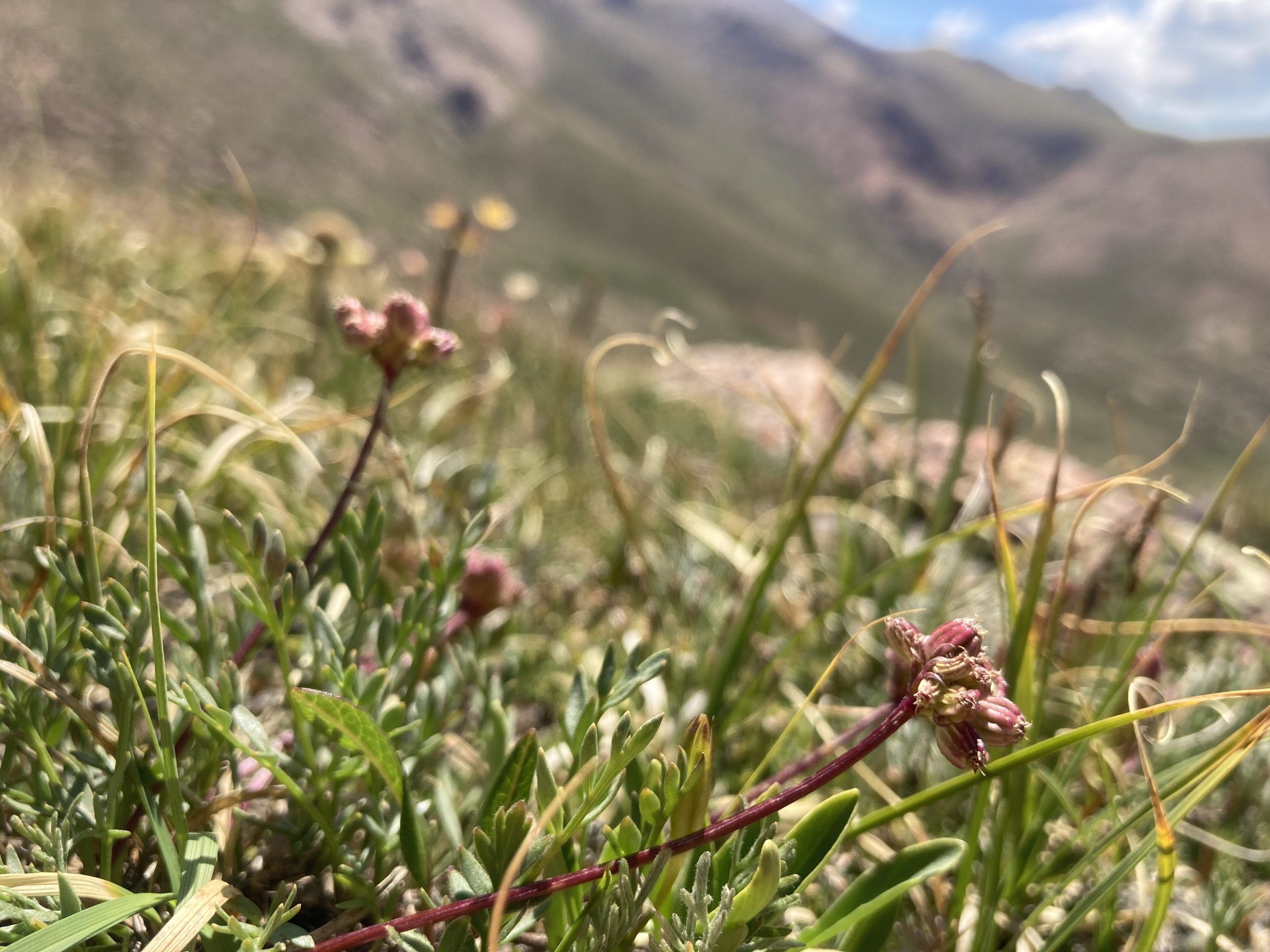
The CPC National Office will continue to endeavor to build the resources and offerings on CPC Rare Plant Academy into the future. We are particularly excited to launch the CPC Applied Plant Conservation Online course in 2023 as a component of RPA. This course, funded by the Bureau of Land Management, will include novel pre-recorded lectures on plant conservation topics, presented by experts in the field and accompanied by questions formulated by educators to test user comprehension. There will be approximately 72 hours of course content freely accessible to students and new or seasoned plant conservation practitioners. We hope we can continue to build RPA as a hub for plant conservation learning, and we sincerely thank all our partners for sharing their time and expertise with us.
Dr. Jessamine Finch
Our December Conservation Champion is Dr. Jessamine Finch, research botanist for the Native Plant Trust. Jessamine’s work and research at the New England Plant Conservation Program’s seed bank helps advance our understanding of rare plant conservation, and her support of community science and public education initiatives engages new stakeholders to help us reach our collective conservation goals to save endangered plants. Jessamine’s integrated and collaborative approach to rare plant conservation is a wonderful example to us all, and she reminds us that “all actions, no matter how small, help us further plant conservation.” We thank Jessamine for all she does to Save Plants!
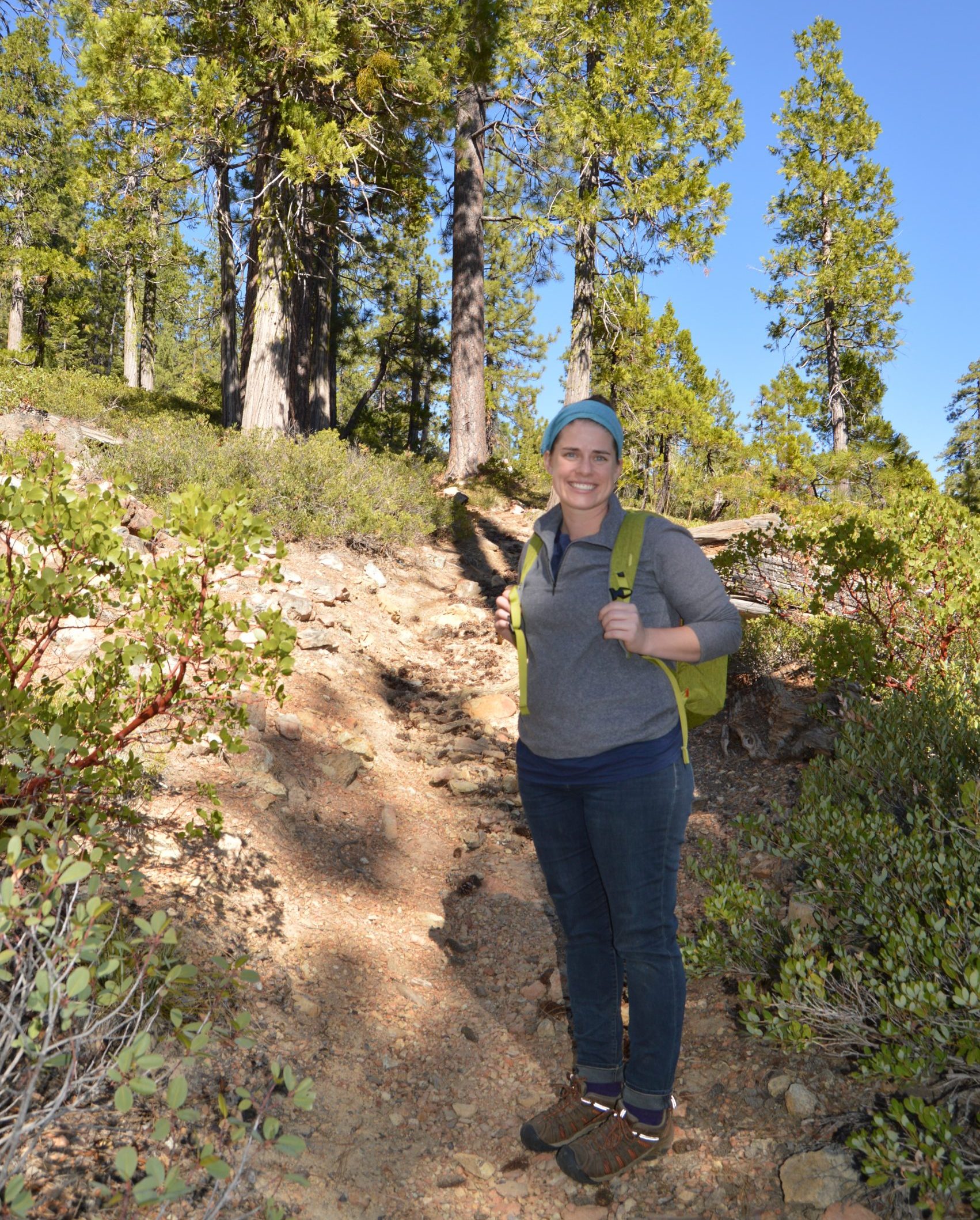
When did you first fall in love with plants?
While I have many fond memories of spending time outdoors in my youth, I think plants and I started to “get serious” about our relationship while I was an undergraduate working and studying at the Botanic Garden of Smith College (Northampton, MA). Meeting plants in the glasshouses and across campus, I was taken by the incredible variation in form, size, and color. For many years, I wasn’t sure where this interest in plants would take me, and I explored topics like landscape design and horticulture alongside biological research.
What was your career path to Native Plant Trust?
After college, I worked for a year in horticulture before pursuing graduate studies in Plant Biology and Conservation with Chicago Botanic Garden and Northwestern University. My research focused on seed sourcing milkweeds (Asclepias) for ecological restoration, combining methods in seed ecology and population genetics. While finishing my degree, I supported and then led Budburst, a community science project investigating the effects of climate change on plants and animals. When a colleague shared an ad for the Research Botanist position at Native Plant Trust, offering leadership of the seed bank and looking for experience with genetics, I knew I had to apply. In February I will be celebrating my three-year anniversary at Native Plant Trust.
What are some of the conservation-related projects you’re currently working on?
My conservation work centers around the seed bank of the New England Plant Conservation Program (NEPCoP), which has recently surpassed 2,000 collections! Through germination trials, I assess seed viability and gain insights into the dormancy and germination of rare plants─for many of which, little to no information is available in the literature. Looking forward to January, I am excited to hire our second Petcavage Seed Conservation Intern, a newly endowed position which supports collections management and research with the seed bank.
A major project I am currently working on is the update to our regional list of rare plants in New England, Flora Conservanda (1996, 2012). Led by the Regional Advisory Committee of NEPCoP, I am working with the Director of Conservation, Michael Piantedosi, to synthesize data on plant populations (including number, size, threats, and land securement) to generate a revised list expected to be published in 2023. I have also begun working on establishing an experimental test of chaperoned managed relocation, a modified conservation technique proposed by Missouri Botanical Garden. Working with the Oak Spring Garden Foundation (Upperville, VA) and the Coastal Maine Botanic Garden (Boothbay, ME), Native Plant Trust will trial rare, dispersal-limited herbaceous perennials beyond their northern range margin to evaluate this new method.
In your experience, what are some of the pressing conservation needs impacting the rare and native plants of the United States?
To counter the negative impacts of habitat fragmentation, loss of pollinators, climate change, and other threats, plant conservation needs more money, more people, and more time. Public engagement is crucial to directing more resources to plant conservation. The more folks who understand and can speak to the value of plants, the greater the pressure on our representatives to further policy that supports biodiversity conservation.
Working within the present confines, we need to secure land conservation easements, manage invasive species, and counter other drivers of decline, while simultaneously working to safeguard genetic diversity in ex situ collections. Techniques like seed banking, cryopreservation, and tissue culture can help us preserve unique genetic diversity before it is lost forever, allowing for the recovery and reestablishment of plant populations in the future.
How can public engagement & outreach help achieve conservation goals?
Engaging the public is critical to reaching our conservation goals. Since 1993, the Plant Conservation Volunteers program has been working with community scientists across the New England region to monitor and collect seed of rare plants─and we are not the only ones! In a recent study with colleagues from Plants of Concern at Chicago Botanic Garden, we surveyed 15 different community science projects that work with volunteers across the U.S. to monitor rare plants. Opportunities like these allow us to conduct more monitoring and respond more quickly to declines, while also nurturing plant conservation ambassadors who can bring that knowledge and passion into their communities, extending our reach.
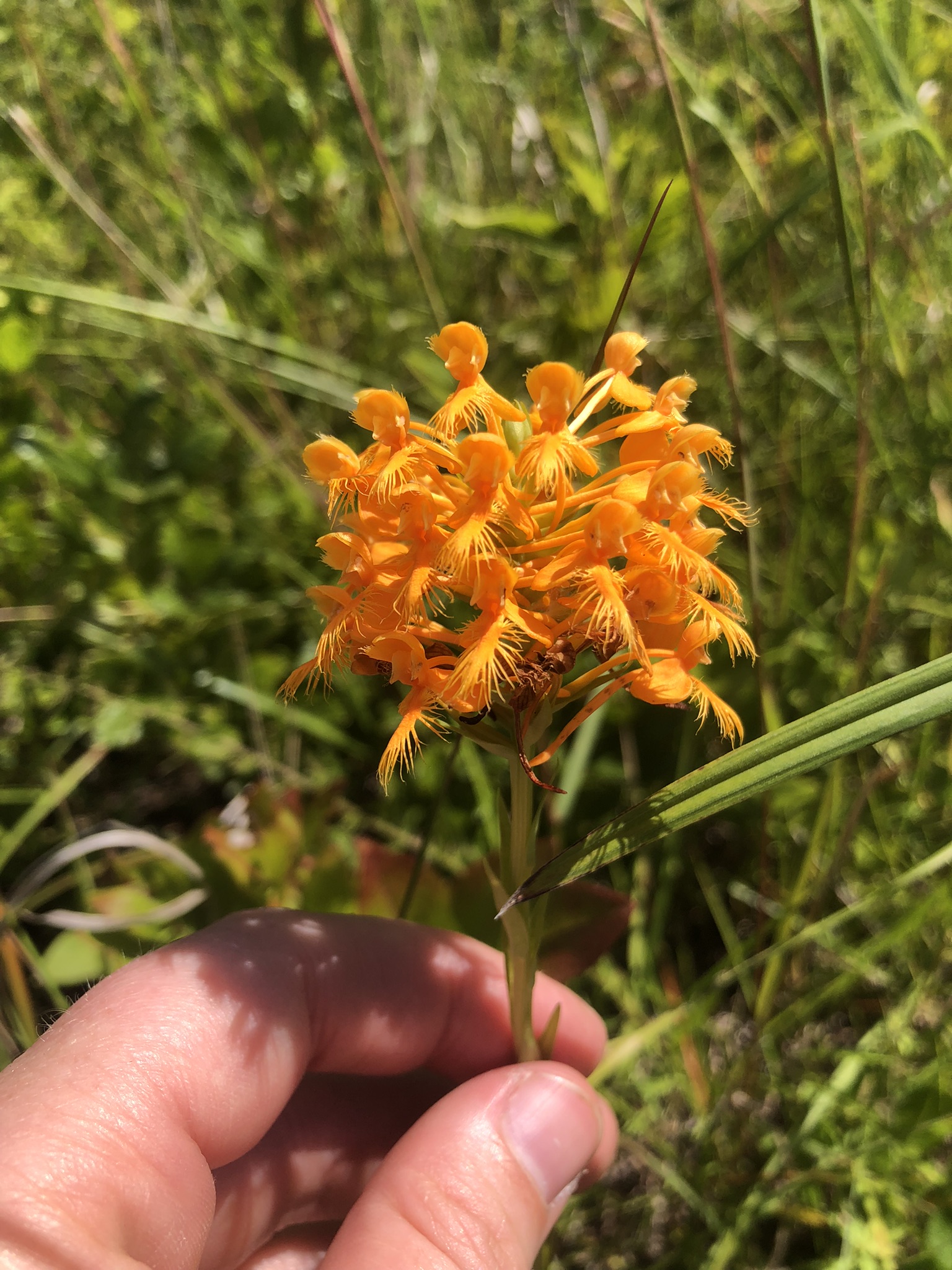
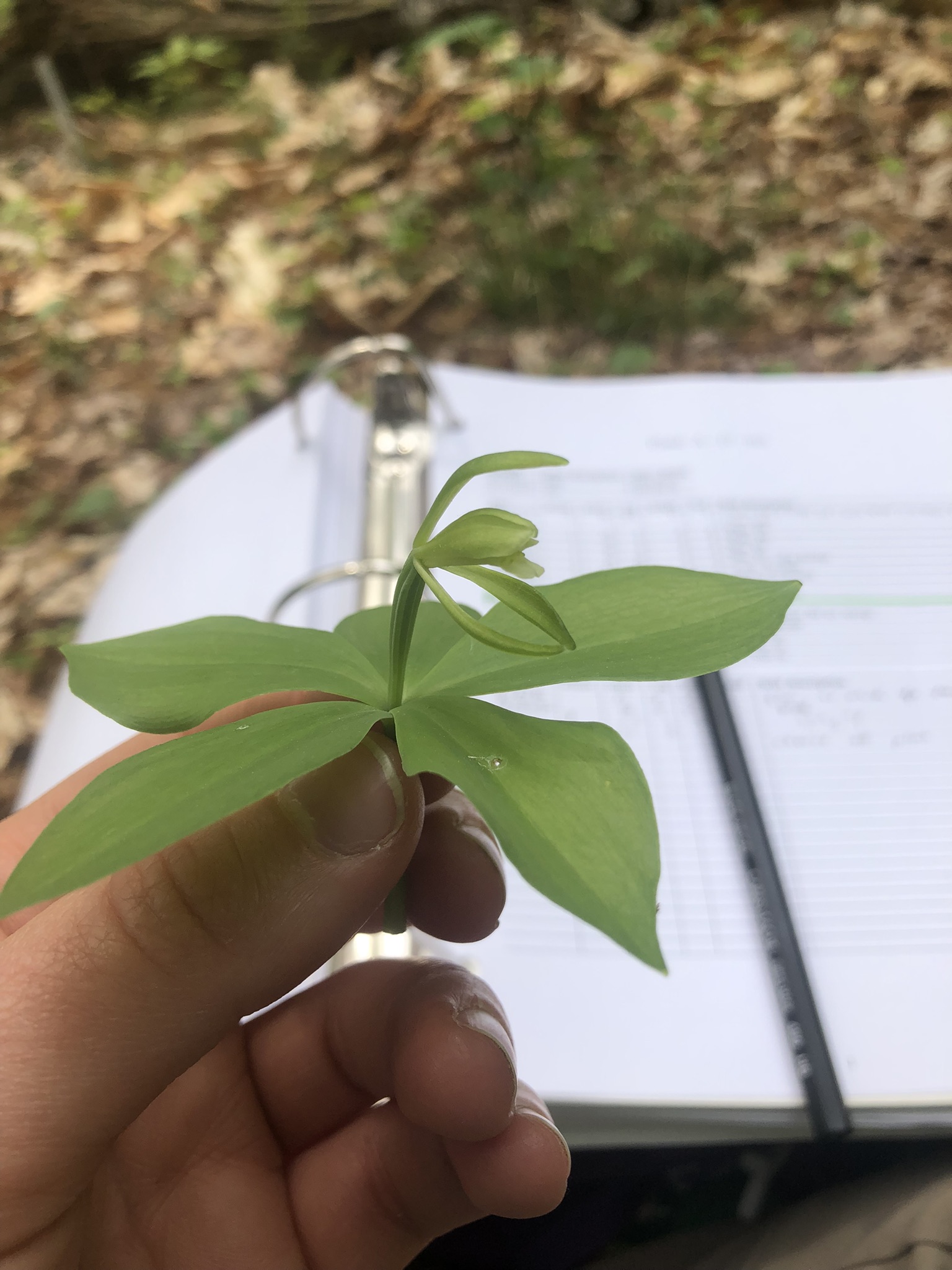
What successes or challenges have you encountered in your work?
One challenge I am grappling with is how we adjust our rare plant work to account for intracontinental plant migration, resulting in what some call “neonatives.” For example, how should we classify a new occurrence of a plant that is native to eastern North America but not considered native to New England? Labeling this occurrence as ‘non-native’ may be inappropriate, as plant migration is a natural process that is expected to increase under climate change. However, labeling it ‘native’ may be inappropriate if the occurrence is a cultivated variety and/or garden escapee. In our ongoing update of Flora Conservanda, we are proposing a conservation planning framework for consideration of newly arriving native species, based on the origin and behavior of the occurrence (e.g., persisting, recruiting, colonizing new sites) as well as the geographic range of the species.
What has surprised you about working with and learning more about rare plants?
Something that has surprised me about working with rare plants is that you can live in an area for years and never encounter a given plant species, even if you spend a lot of time outside and in natural areas. People often say that it is hard to love something you have never met. While it may not be appropriate to plant rare species in private gardens, I think it is so important for places like botanic gardens to display them to enable people to meet their local rare plants. Becoming a rare plant monitor with programs like Plant Conservation Volunteers is another great way to build relationships with the rare plants in your area.
What advice would you give to those who wish to learn more about how they can help save imperiled plant species? How can the public learn more and get involved?
Everyone has the potential to help save imperiled plants, no matter your skill set, location, or availability! Reach out to local botanic gardens, state native plant societies, land trusts, and parks to inquire about opportunities. Become a rare plant monitor. Promote plant conservation knowledge and happenings in your networks. Vote for candidates who prioritize the environment, and don’t be afraid to reach out to your representatives to voice your concerns and encourage them to support key legislation! Remember that all actions, no matter how small, help us further plant conservation.
-

Jessamine searching for a rare alumroot (Heuchera) in Virginia. Photo credit: Rachel Braun. -

A germinant of globally vulnerable (G3) variable sedge (Carex polymorpha) from the seed bank of the New England Plant Conservation Program. Photo credit: Jessamine Finch. -
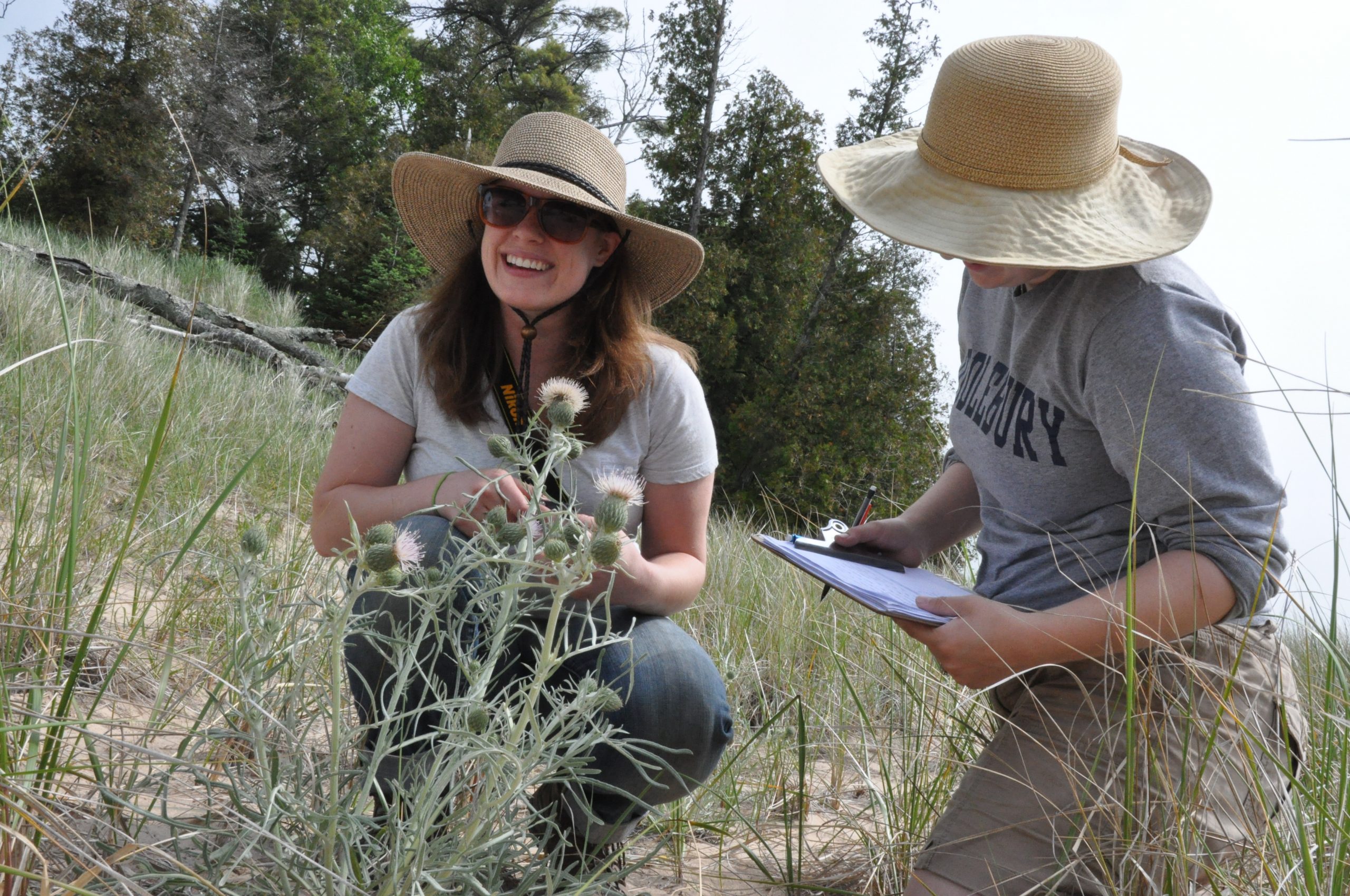
Jessamine assisting in monitoring of Pitcher's thistle (Cirsium pitcheri) in Wisconsin. Photo credit: Pati Vitt.
2023 Catherine H. Beattie Fellowship in Conservation Horticulture
The Center for plant Conservation (CPC) is pleased to announce that Applications are now open for the 2022 Catherine H. Beattie Fellowship! Each year, The Garden Club of America (GCA) and CPC award the Catherine H. Beattie Fellowship in Conservation Horticulture to graduate students in biology, horticulture, or a related field. The purpose of the award is “to promote conservation of rare and endangered flora in the United States, with preference given to students whose projects focus on the endangered flora of the Carolinas and southeastern United States.” The fellowship was established to honor Catherine H. Beattie, who served as a director and board member of the GCA and as president from 1981 to 1983. The first fellowship was given by the Fullerton Foundation in 1983. The Fellowship provides one annual research grant of up to $4,500 as compensation for work at a botanical garden, jointly serving the program of CPC and the student’s curricular studies.
Applications are due by January 31! Learn more and apply.
The Garden Club of America offers a variety of scholarship opportunities related to the field of plant conservation that may be of interest to CPC’s conservation partners. Learn more about GCA scholarship opportunities.
National Collection Spotlight: Bristlecone Fir
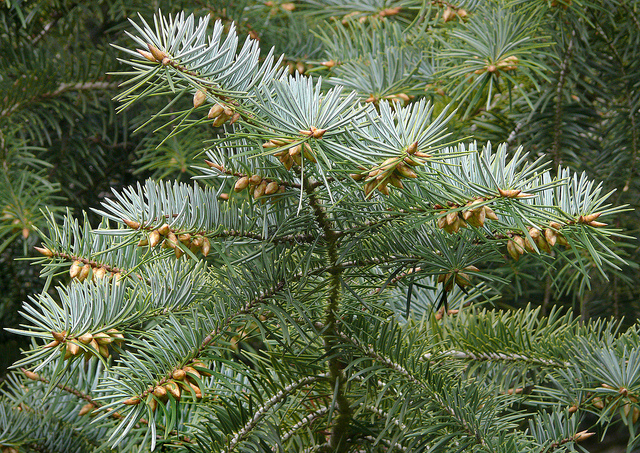
Bristlecone fir (Abies bracteata) is an evergreen coniferous tree native to California’s Santa Lucia Mountains. The common name arises from the species’ unique cones, which are long, rounded, and covered in yellow-brown bristles. Back as early as the 1840s, botanists of California tried – to no avail – to collect seed from this imperiled species. It was not until 2017 that a team from California Botanic Garden, led by Cheryl Birker, accomplished the first successful seed collection of Bristlecone fir.
Abies bracteata is held in the CPC National Collection at California Botanic Garden and in UC Santa Cruz Arboretum and Botanic Garden. Critical work for the species’ conservation is being conducted at these institutions in the form of propagation research, seed collection, seed banking, and living collection curation.
Learn more about conservation actions taken for Bristlecone fir on its National Collection Plant Profile, and help support its conservation with a Plant Sponsorship.
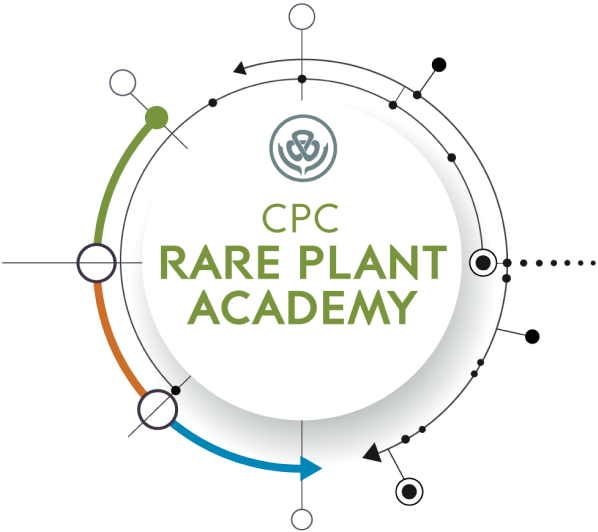
As Seen on CPC’s Rare Plant Academy: Community Forum
The Rare Plant Academy Community Forum is a great tool for everyone–from aspiring botanists and students to seasoned conservation professionals. Stay up to date on employment opportunities, project news, upcoming conferences and more in the Announcements forum. This public forum is a fantastic resource for anyone looking to get involved in conservation work. In the CPC Members Only message board, Conservation Officers from CPC Partner Institutions can message internally within our network. Forums for each chapter of the CPC Best Plant Conservation Practices guide provide spaces for users to ask conservation professionals in the CPC network specific conservation questions. These channels encompass comprehensive expertise in plant conservation, from land management to seed banking to reintroduction. Anyone interested in conservation can sign up to receive updates from the Rare Plant Academy Community Forum and engage with our robust community of plant conservation experts!
Get Updates
Get the latest news and conservation highlights from the CPC network by signing up for our newsletters.
Sign Up Today!Employment Opportunities
The Harold L. Lyon Arboretum at the University of Hawai‘i at Manoa invites applicants for a 11-month, tenure-track, full-time Specialist (position number 86151), to begin Spring 2023, pending availability of funds. The University of Hawai‘i at Manoa is a leading institution for the study of Hawai’i, Asia, and the Pacific, and the Harold L. Lyon Arboretum is committed to furthering UH Manoa’s mission as a world class botanical garden, a leader in native Hawaiian plant conservation, and a Native Hawaiian place of learning. We are looking for a talented colleague with evidence of strong research capabilities, research proficiency in ex-situ plant germplasm conservation, and demonstrated ability in seed, in vitro and/or cryopreservation germplasm preservation. The ideal colleague has the demonstrated ability to conduct and develop ex situ plant conservation technologies and can work collaboratively with diverse groups of partners such as University of Hawaii colleagues/departments, other academic institutions and botanical gardens, and government and land management institutions. We are especially interested in applicants with expertise in critical, theoretical, and methodological approaches ranging from scientific and conservation perspectives to ex situ plant germplasm technologies.
For more information and to apply:
https://www.schooljobs.com/careers/hawaiiedu/jobs/3820483/associate-specialist-specialist-86151?keywords=8615&pagetype=jobOpportunitiesJobs
The Southeast Climate Adaptation Science Center is hiring a post-doctoral associate to develop climate-change impacts information for rare plants of the southeastern U.S. Apply by December 30th. Position announcement is here: https://www.zintellect.com/Opportunity/Details/USGS-2022-20
USGS Climate Impacts Scientist Postdoctoral Fellowship on Southeastern Rare Plants
The Post-Doctoral Associate will work closely with the Southeast Climate Adaptation Science Center and the Southeast Plant Conservation Alliance to develop climate-impacts information for subsets of plant species from the forthcoming Southeastern Plants Regional Species of Greatest Conservation Need (RSGCN), which will be the nation’s first regional SGCN for plants. This regional list of rare and threatened plant species will provide an important resource to state and federal agencies, conservation organizations, and researchers focused on rare-plant conservation.
The Post-Doctoral Associate will develop climate-impacts information both at the level of species and for ecosystems. For subsets of species, the Post-Doctoral Associate will compile information on existing index-based vulnerability assessments (e.g., CCVI) as well as climatic niche models. At the level of ecosystems, the Post-Doctoral Associate will work with colleagues at NatureServe, USGS, Atlanta Botanical Garden, and with botanists and ecosystem experts from other institutions, to select southeastern ecosystems that provide habitat to relatively large numbers of RSGCN plants. For these selected ecosystems, the Post-Doctoral Associate will use existing downscaled climate projections to produce climate-impacts summaries, which will take the form of brief, user-friendly narrative summaries of how climate change may impact habitat viability for rare plant species, as well as highlight potential adaptation actions that natural-resource managers may want to consider.
This one-year position is expected to run from February 2023 through January 2024 (or as negotiated), with highly competitive salary and an additional benefits package and funding for travel. The Post-Doctoral Associate will have the option to work remotely, with regular virtual communication with the larger project team. Two to four travel engagements will be required to meet in person and deliver preliminary findings at meetings and/or conferences. Although preference will be given to applicants with strong knowledge of and familiarity with species, ecosystems, and landscapes of the southeastern U.S., the Post-Doctoral Associate may be physically located anywhere in the United States.
The successful applicant will possess: (1) excellent writing skills, including the ability to translate complex scientific concepts into easily understandable narrative text, (2) familiarity with a variety of wetland and terrestrial ecosystems of the southeastern United States, including factors that affect plant-habitat viability, (3) basic understanding of plant physiology related to environmental conditions, and (4) understanding of downscaled climate models and their associated forms of uncertainty.
Link for more information and to apply: https://www.zintellect.com/Opportunity/Details/USGS-2022-20
Program Overview
The Minnesota Landscape Arboretum’s Plant Conservation Program establishes the Arboretum as an important center of endangered species research, conservation and restoration. The program’s primary focus is on work with endangered species that tend to be either federally or state-listed. However, there are some species that are not legally defined as endangered, but are considered at-risk by other authorities warranting attention by this program. Another specialized focus of this program is work to preserve and protect native species of orchid.
Our team works to identify key species and populations and develop both conservation strategies to benefit these plants. Strategies include:
- Collaboration with conservation partners
- Seed collection for long-term storage
- Propagation for research and reintroduction
- Population monitoring
- Outreach and education
Position Overview
The Conservation Botanist supports and develops the Minnesota Landscape Arboretum’s (MLA) Plant Conservation Program (PCP). The incumbent works with the Plant Conservation Program, functioning as a specialist in field activities, acting as a field botanist/ecologist and managing projects focused on these skill sets.
Specifically, this includes research and application of ex situ conservation of native rare plants in the region, including seedbanking, rescue, restoration, management and survey/monitoring. In pursuit of these goals, the position will manage or assist with individual programs and projects, especially for programs in rare plant monitoring and rescue. To complete activities, the position will also coordinate, train, manage and schedule teams of staff and volunteers for individual projects
Responsibilities Summary
Plant Conservation Research and Program Development
- Participates in strategic planning and development of the Arboretum’s Plant Conservation Program (PCP)
- Participates in education and public outreach programs
- Collaborates with appropriate land management agencies, and other partners, to develop and implement strategies to ensure the conservation of Minnesota’s most imperiled plants.
- Develops project structure, including project scope, infrastructure and staffing needs, funding requirements, outside partnership opportunities, permits, agreements (MOUs) and access requirements, etc.
Project Management and Research
- Reviews available data to identify species, taxonomic groups, or natural plant communities in need of conservation support.
- Identifies and secures all necessary permits to complete field work
- Demonstrates and maintains expertise in botanical and field survey methodology
- Conducts fieldwork in a safe and effective manner and oversees participating staff, interns, and volunteers.
Project Funding and Budgets
- Identifies and reviews potential funding opportunities and applies for funding in collaboration with staff.
- Manages budgets and provides necessary information for invoicing or billing.
Staff and Volunteer Supervision
- Recruits, trains, directs and oversees volunteers assisting with plant conservation projects
- Trains, directs and oversees seasonal staff and interns assisting with plant conservation projects
Required Qualifications:
- Bachelor’s degree in botany, ecology or related fields and six years of related work experience, or master’s degree in botany or related fields and four years of related work experience.
- Demonstrated commitment to advancing and promoting diversity, equity, and inclusion including the ability to work respectfully and effectively with individuals with diverse identities and underrepresented groups.
- Demonstrated experience with botanical field work
- Demonstrated ability to work with partners external to your employment
- Ability to work remotely under adverse field conditions
- Proficiency in database and data management
- Proficiency in GIS software and analysis
Preferred Qualifications:
- Experience with permitting processes (ideally governmental)
- Experience with grant writing and grant management
- Ability to work independently or in small teams
- Experience with species assessments
- Experience developing and implementing new programs
- Experience managing a complex and diverse work portfolio
- Comfortable presenting results of research and projects to a variety of audiences
- Demonstrated capacity to develop and maintain positive working relationships with colleagues, partners and various stakeholders.
Special/Physical Requirements:
This position requires frequent travel among worksites including travel to offsite locations throughout Minnesota and occasional national and international travel will also be required. Must be able to work in a variety of outdoor environments for prolonged periods of time. Outdoor exposures may include temperatures above 90 degrees and below 32 degrees, biting insects and poisonous plants.
College Overview
The College of Food, Agricultural and Natural Resource Sciences (CFANS) is composed of 13 academic departments, 10 research and outreach centers across Minnesota, plus the Minnesota Landscape Arboretum, the Bell Museum, and dozens of interdisciplinary centers that span the college, the university, and the globe. CFANS offers thirteen undergraduate majors and thirteen graduate majors, three pre-major/pre-professional programs and 23 minors for undergraduate students. Undergraduate enrollment in the college is about 2000 students. CFANS students are well-prepared for a diverse, multicultural workforce through the college’s emphasis on experiential, interdisciplinary, and intercultural learning; internships and global perspectives.
At CFANS, we aim to inspire minds, nourish people, and enhance the natural environment, and we believe that’s only possible if everyone feels seen, heard and respected. Our College embraces equity and diversity and prioritizes purpose-driven scientific discovery in order for us to build a better tomorrow, together. We align with the University of Minnesota in providing equal access to and opportunity in its programs, facilities, and employment without regard to race, color, creed, religion, national origin, gender, age, marital status, disability, public assistance status, veteran status, sexual orientation, gender identity, or gender expression.
Salary/Benefits:
Salary is competitive and commensurate with experience and qualifications.
The University of Minnesota offers a comprehensive benefits package including:
- Competitive wages, paid holidays
- Low cost medical, dental, and pharmacy plans
- Health care and dependent daycare flexible spending accounts
- Excellent retirement plans with generous employer contribution and immediate vesting
- Employer paid disability and life insurance
- Wellbeing program with reduced insurance premiums
- Tuition reimbursement opportunities covering 75% of eligible tuition
- Opportunities for growth and promotion
- Employee Assistance Program
For more information regarding benefits, see Summary of Benefits.
How to Apply
Applications must be submitted online. For more detailed information about the position and to apply see here.
Ways to Help CPC

Conservation Advocacy Initiatives
CPC urges you to ACT NOW by contacting your senators and representatives to support this bill.
Call the Capitol switchboard in D.C. at (202) 224- 3121 and ask to be connected to your Senator’s office, where you’ll be able to speak to a member of their staff.

Support CPC By Donating Today
Without plants, life as we know it would not be possible. Yet two in five of the world’s plants are at risk of extinction. More than ever before, rare plants need our help!
That is why all of us at the Center for Plant Conservation (CPC) are deeply grateful to have you as part of our conservation community. Your generous and unyielding support allows CPC and our network of world-class botanical institutions to make great strides in our shared mission to Save Plants from extinction.
Your gift ensures CPC’s meaningful conservation work will continue. Together, we save more plants than would ever be possible alone—ensuring that both plants and people thrive for generations to come. We are very thankful to for all that you do to help us Save Plants!
Donate to Save Plants Today!
Donate to CPC
Thank you for helping us save plant species facing extinction by making your gift to CPC through our secure donation portal!
Donate Today